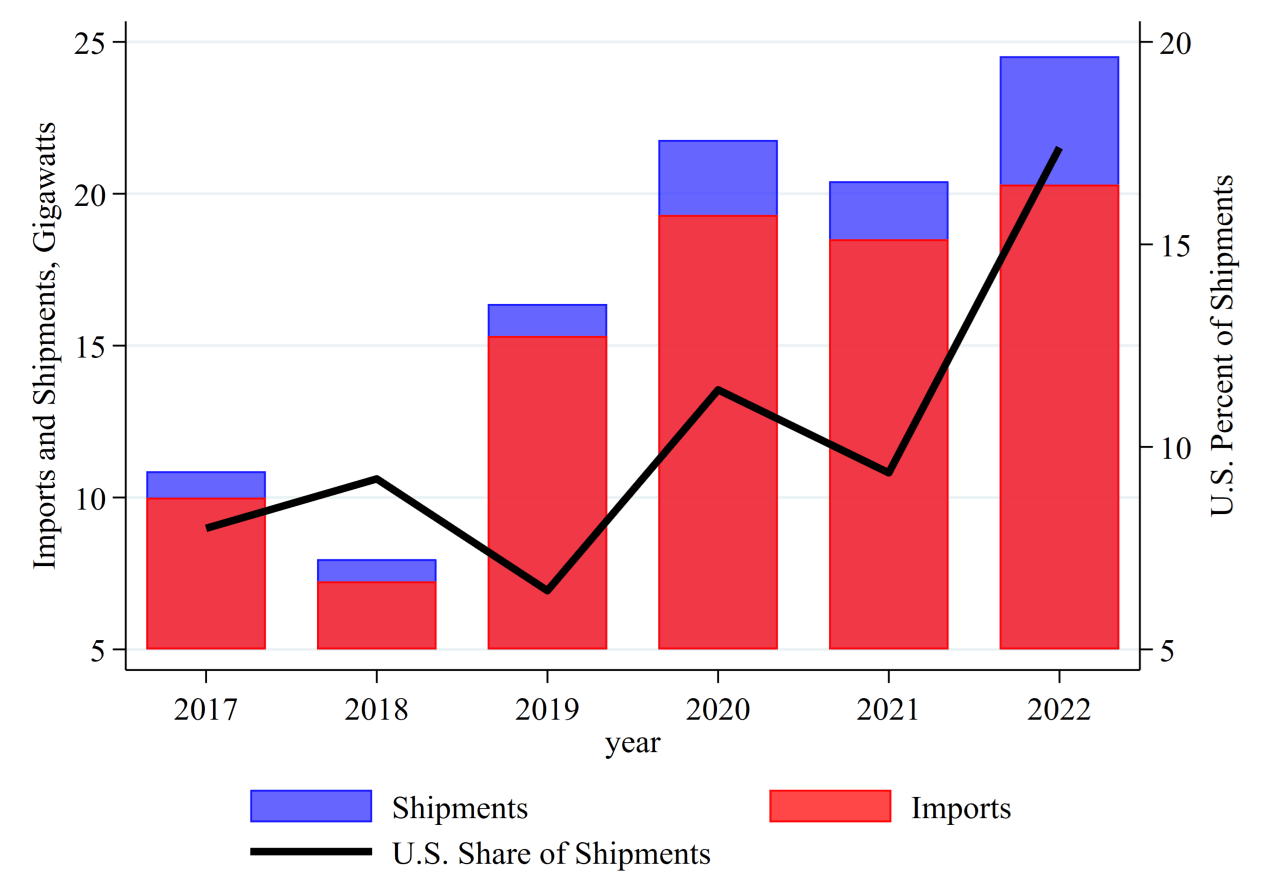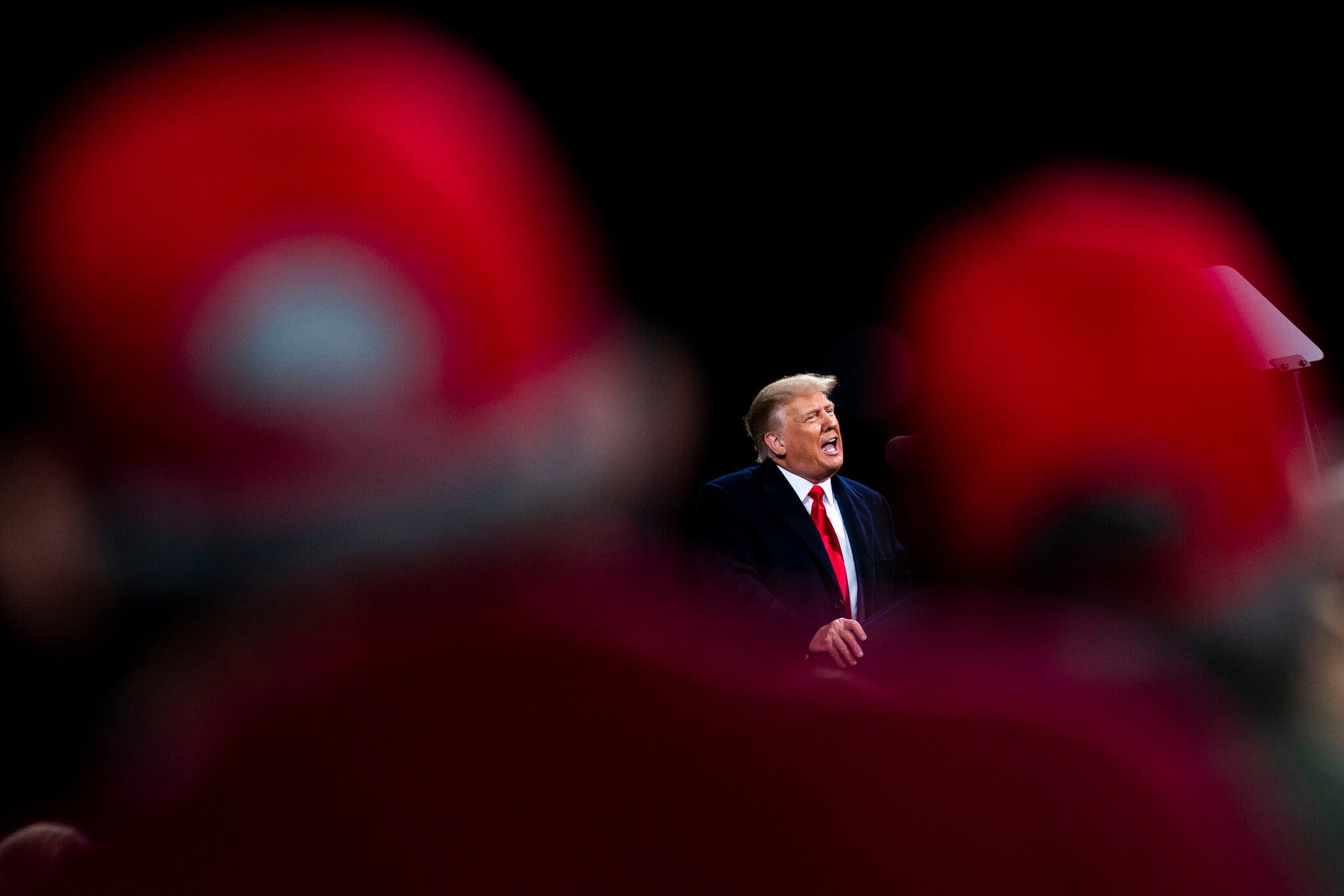Increased Market Share Sought By Hanwha And OCI Following US Solar Tariffs

Table of Contents
Hanwha's Strategy in the Post-Tariff Environment
Hanwha, a prominent player in the global solar industry, has adopted a multifaceted strategy to leverage the opportunities presented by the US solar tariffs. Their existing infrastructure and commitment to innovation are key pillars of their approach.
Exploiting Existing US Infrastructure
Hanwha's significant existing US presence and established manufacturing capabilities provide a substantial advantage. This allows them to readily meet the surging demand for domestically produced solar panels, thereby circumventing the tariff-related import challenges faced by competitors.
- Increased production capacity in the US: Hanwha has significantly invested in expanding its US-based manufacturing capacity to minimize reliance on imports and ensure a consistent supply of solar panels to meet growing demand. This reduces vulnerability to supply chain disruptions and tariff fluctuations.
- Strategic partnerships with US distributors and installers: Collaborations with established US distributors and installers provide Hanwha with access to a wider customer base and efficient distribution networks, strengthening their market reach and penetration.
- Focus on long-term contracts to secure market share: By securing long-term contracts with utility-scale projects and commercial clients, Hanwha solidifies its position in the market and reduces price volatility risks associated with short-term deals.
Innovation and Technological Advancement
Beyond leveraging existing infrastructure, Hanwha is aggressively investing in research and development (R&D) to develop more efficient and cost-effective solar technologies. This commitment to innovation is crucial for maintaining a competitive edge in a rapidly evolving market.
- Development of advanced solar cell technologies: Hanwha is at the forefront of developing advanced solar cell technologies, such as high-efficiency PERC (Passivated Emitter and Rear Cell) and heterojunction solar cells, to maximize energy output and reduce the cost per watt.
- Investment in automation and process optimization: Investing in automation and process optimization helps reduce production costs, improves efficiency, and enhances the overall competitiveness of Hanwha's solar products.
- Focus on reducing the carbon footprint of solar panel production: Hanwha is committed to environmentally sustainable practices, reducing the carbon footprint of its solar panel production process, appealing to environmentally conscious consumers and businesses.
OCI's Response to US Solar Tariffs
OCI, a major polysilicon producer, is also capitalizing on the US solar tariffs, focusing on securing its position within the domestic supply chain and diversifying its business interests.
Polysilicon Production and Supply Chain Control
The increased demand for domestically sourced materials, a direct consequence of the tariffs, has significantly benefited OCI. Their robust polysilicon production capabilities solidify their crucial role in the US solar supply chain.
- Expansion of polysilicon production facilities: OCI is actively expanding its polysilicon production facilities in the US to meet the growing demand and reduce reliance on international suppliers. This strengthens their position as a key supplier within the US solar industry.
- Strengthening relationships with downstream solar manufacturers: By forging stronger relationships with downstream solar manufacturers, OCI secures a stable customer base and ensures a reliable market for its polysilicon production.
- Focus on price stability and consistent supply: Maintaining price stability and ensuring consistent supply are critical for OCI in building trust and securing long-term contracts with its downstream clients.
Diversification and Strategic Partnerships
OCI’s strategy extends beyond its core polysilicon business. They are strategically diversifying to further enhance their market position and mitigate risk.
- Exploration of new markets and technologies within the renewable energy sector: OCI is actively exploring opportunities in other renewable energy sectors, such as battery storage and green hydrogen, to diversify its revenue streams and reduce reliance on the solar market alone.
- Strategic collaborations to broaden their reach within the US market: OCI is pursuing strategic collaborations to expand its reach and influence within the broader US renewable energy landscape, improving market share and strengthening overall positioning.
- Investment in solar energy projects to showcase technological capabilities: Investing in and developing their own solar energy projects allows OCI to showcase its technological capabilities, strengthen its brand reputation, and gain valuable market insights.
The Broader Impact of US Solar Tariffs on Market Dynamics
The US solar tariffs have had a profound impact on the broader market dynamics, affecting both domestic production and global supply chains.
Increased Domestic Production
The tariffs have acted as a catalyst for increased domestic solar panel manufacturing in the US. This has led to several positive outcomes, including job creation and economic growth within the country.
- Analysis of the impact on US manufacturing jobs: The tariffs have demonstrably created thousands of jobs within the US solar manufacturing sector. Further research is required to understand the long-term impacts.
- Evaluation of the economic benefits of increased domestic production: Increased domestic production has spurred economic growth in the US, boosting local economies and attracting investment into the solar sector.
- Comparison of pre- and post-tariff market conditions: Comparing pre- and post-tariff market data reveals a significant shift towards domestic production, increased job creation, and a more localized solar energy industry.
Shifting Global Supply Chains
The tariffs have initiated a ripple effect across the globe, significantly altering existing solar energy supply chains and prompting a greater emphasis on regionalization and localized production.
- Discussion of the impact on global solar energy supply chains: The tariffs have forced a reassessment of global solar energy supply chains, leading to a shift toward more regionalized production and sourcing of components.
- Analysis of the implications for international trade in solar technology: The tariffs highlight the complexities and potential disruptions of protectionist trade policies on international trade in solar technology.
- Examination of the long-term consequences of protectionist policies: The long-term consequences of protectionist policies in the solar industry are still unfolding, requiring careful monitoring and analysis.
Conclusion
The implementation of US solar tariffs has presented a complex scenario for major players in the solar energy market, offering both challenges and unprecedented opportunities. Hanwha and OCI, through strategic adaptations that include increased domestic production, technological innovation, and strategic partnerships, are aggressively vying for increased market share. Understanding the nuances of this post-tariff landscape is critical for all stakeholders. The ongoing impact of these tariffs and the ensuing competition for market dominance will continue to shape the future of solar energy within the United States. To stay abreast of the latest developments surrounding US solar tariffs and their ramifications for the industry, be sure to follow reputable news sources and in-depth industry analyses.

Featured Posts
-
 Gorillaz House Of Kong And Anniversary Concert Announcements
May 30, 2025
Gorillaz House Of Kong And Anniversary Concert Announcements
May 30, 2025 -
 Fans React To Bts V And Jungkooks Impressive Post Military Physique
May 30, 2025
Fans React To Bts V And Jungkooks Impressive Post Military Physique
May 30, 2025 -
 Nominasi Amas 2025 Rm Bts Dan Kolaborasi Spesialnya Dengan Tablo
May 30, 2025
Nominasi Amas 2025 Rm Bts Dan Kolaborasi Spesialnya Dengan Tablo
May 30, 2025 -
 Mqawmt Aljdar Walastytan Thwyl 13 Hya Astemarya Ila Mstemrat Tsrye Wtyrt Altghyyr Aljghrafy Fy Flstyn
May 30, 2025
Mqawmt Aljdar Walastytan Thwyl 13 Hya Astemarya Ila Mstemrat Tsrye Wtyrt Altghyyr Aljghrafy Fy Flstyn
May 30, 2025 -
 Late Term Clemency Trump Grants Forgiveness To 26 Individuals
May 30, 2025
Late Term Clemency Trump Grants Forgiveness To 26 Individuals
May 30, 2025
